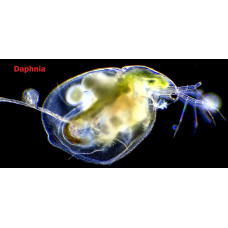Mesoplankton are organisms that are 1 to 5 mm in size.
A set of planktonic organisms: of lower crustaceans - Daphnia, Cyclops, of algae - Anabaena, Mycrocystis, etc. The term also refers to plankton inhabiting the mesopelagial. This term also refers to plankton living in the mesopelagial.
The mesopelagic zone is home to a diverse zooplankton community. Common zooplankton include paddlefish, krill, jellyfish, siphonophores, larval, cephalopods and pteropods. Food is generally scarce here, so predators have to effectively forage for food. Mesopelagic zooplankton have unique adaptations to low light. Bioluminescence is a very common strategy in many zooplankton. Another common adaptation is enlarged light organs, or eyes, which are common in krill and shrimp so they can take advantage of limited light. Some octopuses and krill even have tubular eyes that look upward in the water column. Most life processes, such as growth rates and reproduction, are slower in mesopelagics. Metabolic activity has been shown to decrease with increasing depth and decreasing temperature in colder water environments. For example, the mesopelagic shrimp-like mysid, Gnathophausia ingens, lives from 6.4 to 8 years, while similar benthic shrimp live only 2 years.
Mesoplankton
Tags: mesoplankton


